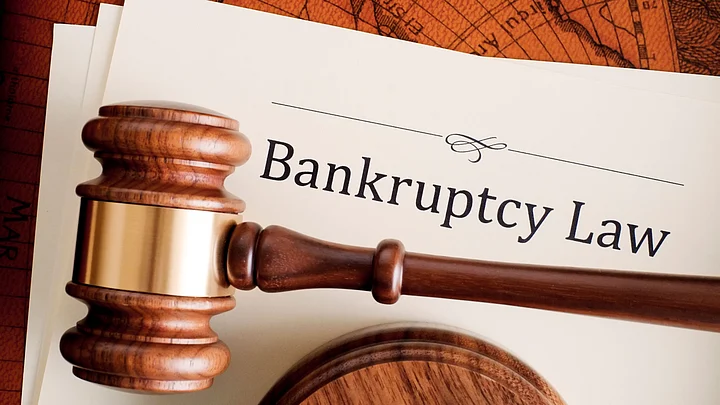The government on Tuesday said that it is willing to refer the Insolvency and Bankruptcy Code, 2015, to a joint committee of Parliament, effectively pushing its enactment at least to the Budget session beginning in February. A final decision on whether the Bill will be referred to a joint select committee will be taken on Wednesday, the last day of the winter session.
Pitching for the Bill’s early enactment, finance minister Arun Jaitley said, “I could have styled it as a money bill but I wanted a discussion on the bill because I think it is important. I recommend it should go to a select committee because most of the recommendations made by the standing committee are not accepted and the other house again refers the issue to the select committee.”
A money bill would have given the government the option to effectively bypass the upper house, where it is in a minority.
This piece was originally published after the TK Vishwanath-headed panel presented the draft Bankruptcy Code last month.
India’s bankruptcy laws may soon be legislatively overhauled to render ‘insolvency resolution’ in months – 180 days, extending to a further 90 days maximum.
This will replace the grim ponderousness of the court-appointed ‘official liquidator’, the ineffective Debt Recovery Tribunal (DRT), and the byzantine Board of Industrial and Financial Reconstruction (BIFR), not to mention the vagaries of the Sick Industrial Companies Act, 1985.
The new process will use ‘resolution professionals’ or registered insolvency practitioners, working via a regulatory body, and reporting to a Company Law Tribunal.
The new mechanism also proposes to obviate the need for the endless court-sanctioned appeals that can eat away at generations of litigants.
Proposed Bankruptcy Code
- TV Vishwanath-headed panel for framing bankruptcy law presents report
- Allows insolvency resolution within 180 days
- Provide for early identification of financial distress
- Creates new institutional arrangement to look at insolvency resolution
Early Resolution of Failed Businesses
Unlike in the past, when every bankrupt company was a tangled web of sparring between creditors and debtors, with the latter trying to wiggle out of their obligations, the new legislation proposes to give creditors an independent say on when to blow the whistle on viability for the first time.
Simultaneously, the Reserve Bank of India (RBI), under governor Raghuram Rajan, has also been chipping away at regulatory mechanisms to allow creditors – quite often the public sector banks, with their massive non-performing asset (NPA) burden – to convert their loans into equity, and take over management from the failed promoters and ‘wilful defaulters’ before it’s too late.
So a maximum of eight months for a viable resolution is on the anvil, instead of the minimum 4.3 years on average, according to the World Bank. But many proceedings even stretch into decades, using the courts to block progress.
Further Ease of Doing Business
A new bankruptcy code was promised by Finance Minister Arun Jaitley in his maiden budget presentation in 2014, aimed particularly to help small and medium sector companies (SMEs). An interim report from the appointed Bankruptcy Law Reform Committee (BLRC), headed by former law secretary TK Vishwanathan, was released for suggestions and comments in February 2015 and a final version is now ready for execution.
It involves making several changes in the Companies Act, itself recently updated in 2013, and in other taxation and stock market related legislation as well.
The bankruptcy code, combined with reforms being undertaken in the mergers and acquisitions (M&A) space, can have significant cumulative impact on business prospects going forward can be significant.
Early triggering of bankruptcy procedures by external creditors is expected to salvage a greater proportion of residual value before it all vanishes or turns into junk. The objective is to improve the recovery rate of just 25.7 cents on the US dollar, according to data from the World Bank – amongst the shabbiest in the world.
India ranks 130 out of 189 in the World Bank’s Ease of Doing Business rankings at present, coming in after Lesotho and Cameroon, but it is up 12 places from last year. And most of this improvement has come from multiple administrative and executive, rather than legislative actions.
Helping Hand for Foreign Investors
A fast dispute and insolvency resolution procedure, simpler labour laws, further tax reform, implementation of pending legislation on GST and land acquisition, could collectively improve the country’s banking sector, spur industrial development, growth rate and sovereign rankings.
Foreign direct investors have been worried about coming into India as it is tough to make an exit, with almost every law and process an insurmountable hurdle.
As things stand, there is often nothing left to recover from a loss-making unit unless it happens to own the real estate it sits upon.
Early Detection of Financial Distress
At the height of our socialist past, it was thought of as only right that a closed and unviable factory, beyond any hope of revival, with zero and minus net worth, should keep paying salaries to its workers irrespective.
The public sector, then, as now, almost never made a profit at anything it undertook, unless it was administering a monopoly.
Private industry lived on the arcane mercies of the licence-permit raj, the vagaries of changes in raw material and input prices, tax treatments and changes in quotas and other regulations.
It is no wonder then that most company ‘promoters’ in India, even after the reforms of 1991, have made a practice of siphoning off all the borrowed money into their personal coffers at the earliest. This often drives companies into sickness and bankruptcy, while promoters hold their creditors to ransom.
They have been able to do so because of loopholes in personal liability laws, and lack of structured oversight from lenders. This, above all, is about to change.
(Gautam Mukherjee is a plugged-in commentator and instant analyser.)
(At The Quint, we question everything. Play an active role in shaping our journalism by becoming a member today.)
